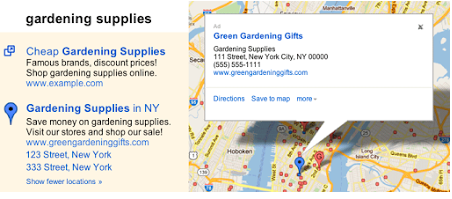Source: SocialSEO
Google has been slow to roll out its changes to Google Maps and AdWords. And this is with Google reason. Since Maps launched in 2005, they have struggled to make a monetizable maps listing. The concern was, if you give the advertisers too much control, the maps listings would become irrelevant to the searchers.
In 2008, Google took the first step to creating maps advertising with the launch of “Google My Business”. And again in 2011 with the re-branding of “Google My Business” as “Google Plus”. Google had successfully incentivized millions of business owners to sign up for a free listing with “Google My Business”. This information was then used to make relevant maps listings and social media profiles.
Now Google has the largest business directory in the world, but the question remained; how do they monetize this newly created audience without watering down the relevancy of the maps and directions search results? The answer is to take the advertising placement out of the hands of marketers and into the control of Google. By using a tried and true metric, quality score; Google has been able to make a grand compromise.
Advertisers can choose to participate in maps listings, but cannot choose when and where the advertisements display. Eliminating the possibility of off the charts directions or irrelevant search results. The Maps Advertisements will display, if the advertisements quality score is high and the location is relevant to the searcher's location.
Additionally, this is a great way for Google to improve paid search as a whole. As Pay Per Click managers rush to join the Map Advertising bandwagon, the less-than-quality advertisers will find their quality score to be a road block. Forcing them to reevaluate the campaign and to improve its relevancy.
For PPC Managers that feel this would be too much of a burden, consider this. If you begin maps advertising, you and your clients can now track “Free Clicks”. These clicks have technically always been free, but we now have the ability to collect data on how often people engage with maps features like:
- Saved Locations
- Shared Locations
- Navigation Clicks
(some not free, but trackable clicks include; phone clicks, location detail clicks, and sitelink clicks)
With this change, a lot of people are concerned that their free listings will go away. Fortunately, that isn’t the case; with maps advertising you are paying for additional space and ad-content within your existing listing. This is not paying for higher (or irrelevant) placements within the maps search results.
If you are interested in learning more about how you can begin Maps advertising, please reach out to our pay per click team; here at SocialSEO.
Written By: Josh Martin
Source: SocialSEO
Written By: Josh Martin
Source: SocialSEO




